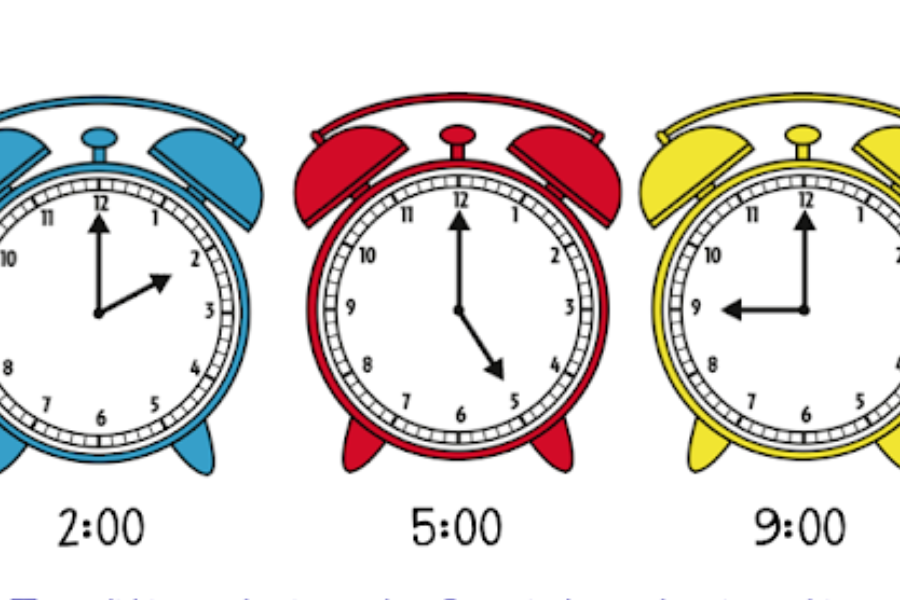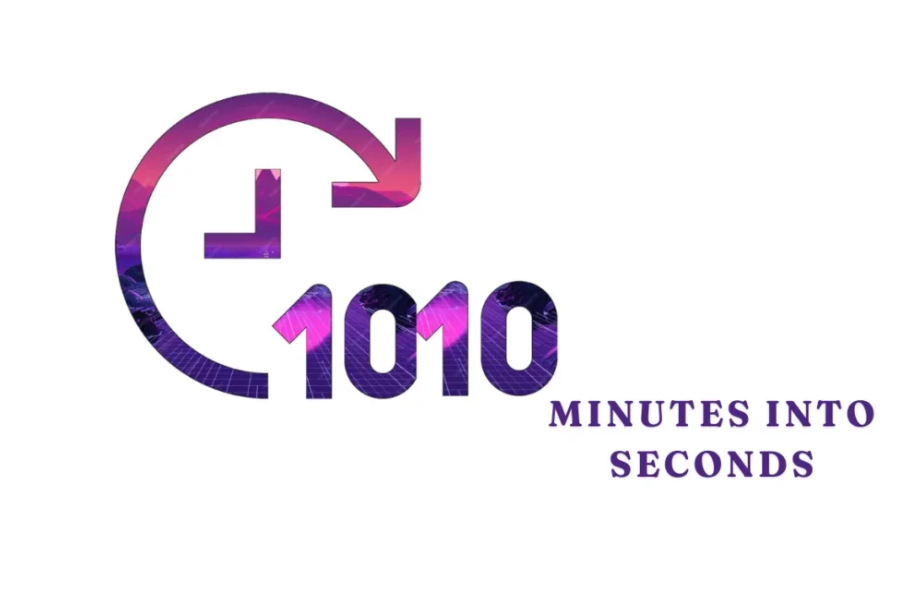Have you ever considered how minor adjustments to your daily routine could create substantial improvements in your life? Imagine the transformative power of dedicating just 1010 minutes—a little over 17 hours—to revolutionize your approach to time management, productivity, and personal well-being. This seemingly small window of time can be the key to unlocking your full potential and achieving significant changes in your daily life.
By focusing on these 1010 minutes, you can implement strategic tweaks that lead to enhanced efficiency and satisfaction. Whether it’s through refining your schedule, setting clear goals, or incorporating productive habits, this guide will help you make the most of every minute. Embracing these changes not only optimizes your time but also fosters a more fulfilling and balanced lifestyle, proving that even brief periods can yield powerful results.
Understanding The Concept Of 10 10 Minutes

Time management becomes more intuitive when you understand how minutes, hours, and seconds relate to each other. Minutes act as the key link between seconds and hours, with each minute consisting of 60 seconds. This structure helps you segment shorter intervals of time into a more manageable form, essential for tasks and scheduling.
When you scale up to hours, the relationship becomes even clearer: one hour equals 60 minutes, which is 3,600 seconds. By understanding these connections, you can efficiently break down and plan your activities. For instance, knowing that 1010 minutes is roughly 16 hours and 50 minutes helps in scheduling tasks, setting goals, or even tracking productivity, making time management simpler and more effective.
The Significance Of 1010 Minutes
The concept of 1010 minutes stems from a philosophy that emphasizes intentional and purposeful living. By focusing on a specific block of time, you can channel your efforts into activities that truly matter, thereby enhancing productivity and personal fulfillment. This approach contrasts with the conventional 24-hour cycle, where time can often feel fragmented and less focused.
Embracing the idea of 1010 minutes means committing to a defined period where you actively engage in meaningful tasks. This method helps eliminate distractions and prioritize essential activities, enabling you to make the most out of every moment. Whether it’s for work, personal projects, or self-improvement, breaking your day into these focused intervals encourages efficient time management and boosts overall satisfaction.
Structuring Your 1010 Minutes For Optimal Efficiency
Breaking down your day into a structured 1010-minute schedule can greatly enhance your productivity and well-being. Start your morning with a 90-minute routine that sets a positive tone for the day. Begin with 15 minutes of stretching to wake up your body, followed by 15 minutes of meditation or mindfulness to clear your mind. A healthy breakfast over 30 minutes provides the necessary fuel for the day, and spend the final 30 minutes planning and journaling to outline tasks and set goals.
For focused work, allocate 480 minutes divided into four 90-minute deep work sessions, with 15-minute breaks between each to maintain productivity and avoid burnout. Incorporate 60 minutes of physical activity, such as a workout, to keep your body active and healthy. During meals and relaxation, spend 120 minutes: 30 minutes for lunch, 60 minutes for dinner with loved ones, and 30 minutes for unwinding with a book or hobby. Dedicate 60 minutes to learning and growth through reading or educational content. Finally, wind down with a 60-minute evening routine, including 30 minutes of calming activities, 15 minutes of reflection and gratitude, and 15 minutes of preparation for the next day. This comprehensive approach helps manage your time effectively, ensuring a balanced and productive day.
Implementing The 1010-Minute Routine

Adopting a 1010-minute routine involves making intentional changes and embracing flexibility. Start by setting clear goals for what you hope to achieve, whether it’s advancing your career, enhancing personal development, or boosting overall well-being. Understanding your objectives will help you align your 1010-minute segments with your priorities.
Next, prioritize your tasks to ensure that your 1010 minutes are spent on what matters most. Use tools like to-do lists or digital planners to organize your schedule effectively. Create a detailed plan that divides your day into the proposed segments, aiming to stick to it closely while remaining adaptable to unforeseen changes. Minimizing distractions is crucial for maintaining focus, so identify and eliminate potential interruptions, such as social media or unnecessary meetings. Regularly review and adjust your routine to refine what works best for you, ensuring that your 1010-minute plan remains effective and tailored to your needs.
Benefits Of The 1010-Minute Routine
Boosted Productivity:
The 1010-minute routine emphasizes dedicated work blocks and structured breaks, which significantly enhance productivity. By concentrating on deep work during focused sessions and minimizing interruptions, you can accomplish tasks more efficiently and make the most of your available time. This structured approach helps you achieve more in less time.
Improved Time Management and Well-Being:
Implementing the 1010-minute routine sharpens your time management skills by promoting a deliberate use of each segment of your day. This structured approach not only helps in managing time effectively but also contributes to improved well-being. Integrating exercise, mindfulness, and relaxation into your daily schedule ensures a balanced lifestyle, supporting both physical and mental health.
Enhanced Focus and Personal Growth:
The routine’s design includes regular breaks and defined work intervals, which help maintain high focus levels and reduce the risk of burnout. Additionally, setting aside time for learning and self-reflection fosters continuous personal and professional growth. By dedicating time to these activities, you cultivate a habit of growth and improvement, enriching both your personal and professional life.
Converting Minutes To Hours And Seconds: A Simple Guide
Understanding the Conversion Formula: Converting minutes to hours and seconds involves a straightforward process using basic time units. Since 1 hour is equivalent to 60 minutes and 1 minute is 60 seconds, the conversion formula is easy to follow. Begin by dividing the total number of minutes by 60 to determine how many full hours are contained within that time. This division provides the hour count.
Calculating Remaining Minutes and Seconds: After finding the number of hours, you need to calculate the remaining minutes by finding the remainder of the division. Multiply this remainder by 60 to convert the remaining minutes into seconds. For example, with 1010 minutes, dividing by 60 gives you approximately 16 hours. To find the extra minutes, subtract 16×6016 \times 6016×60 from 1010, which leaves you with 50 minutes. Converting the remaining 50 minutes to seconds, you get 50×6050 \times 6050×60, resulting in 3000 seconds. This method ensures a clear understanding of how minutes break down into hours and seconds.
Common Mistakes To Avoid When Converting Time

Overlooking Basic Units:
One frequent mistake in time conversion is forgetting the fundamental units of time. Remembering that 60 seconds make up a minute and 60 minutes constitute an hour is crucial. Ignoring these basic conversions can lead to significant errors, affecting the accuracy of your results.
Improper Rounding and Verification:
Another common error is rounding numbers too early in the conversion process. This premature rounding can distort the final result. Precision is essential, so it’s important to carry out conversions without rounding until the final step. Additionally, failing to double-check your work can result in incorrect calculations. Always review each step carefully to ensure accuracy.
Contextual Misunderstandings:
Ignoring the context of your time calculations can also be misleading. Whether you’re working on a schedule, a countdown, or another type of time-based task, understanding the context helps you apply the conversions appropriately. Recognizing the specific needs of your task ensures that you use time conversions effectively.
Tips For Making Accurate Time Conversions
Double-Check Basic Relationships:
Precision in time conversion starts with a clear understanding of basic units. Always remember that there are 60 seconds in a minute and 60 minutes in an hour. Familiarizing yourself with these fundamental conversions simplifies the process and helps avoid errors.
Use Tools and Break Down Steps:
Utilizing a calculator can significantly reduce human error, especially for complex conversions like 1010 minutes. Breaking down the conversion into manageable steps—such as first converting minutes to hours and then addressing the remaining minutes and seconds—can also enhance accuracy. This step-by-step approach makes the calculations more straightforward and less prone to mistakes.
Incorporate Visual Aids and Practice:
Visual aids, such as charts and tables, can provide a quick reference for comparing different time units and enhance your understanding of the conversions. Additionally, practicing time conversions regularly helps build confidence and makes the process more intuitive over time. The more you engage with different time intervals, the more proficient you become in handling time-related calculations.
Overcoming Challenges With The 1010-Minute Routine
Stay Committed and Be Realistic:
Adopting a new routine like the 1010-minute system can be difficult at first. It’s essential to remain dedicated and patient as you adjust to the changes. Give yourself time to adapt and avoid being too hard on yourself during this period of transition. Additionally, setting realistic goals is crucial. Overloading your schedule can lead to burnout, so ensure that your plan balances productivity with adequate periods of relaxation.
Seek Support and Celebrate Progress:
Enlisting support from friends or family can make a significant difference in sticking to your new routine. Sharing your goals with others who can offer encouragement and hold you accountable helps in maintaining motivation. Also, celebrating small achievements along the way can boost your morale and reinforce your commitment. Recognizing your progress, no matter how minor keeps you inspired and focused on your long-term objectives.
Other Useful Time Conversion Formulas

Hours to Seconds:
Converting hours into seconds is a straightforward process. To do this, simply multiply the number of hours by 3600, as there are 3600 seconds in an hour. For example, if you need to convert 2 hours into seconds, you would calculate 2×3600=72002 \times 3600 = 72002×3600=7200 seconds. This quick calculation is especially useful for precise time measurements and data analysis.
Days to Seconds:
When working with days, it’s helpful to know how to convert them into seconds. There are 24 hours in a day, and each hour has 3600 seconds. Thus, one day equals 24×3600=86,40024 \times 3600 = 86,40024×3600=86,400 seconds. This formula is handy for tasks that require converting longer time spans into smaller units, such as when planning events or analyzing long-term data.
Months to Weeks:
For conversions between months and weeks, remember that an average month roughly equates to about four weeks. Therefore, to find the number of weeks in a given number of months, you can multiply the number of months by 4. This method provides an approximate conversion useful for scheduling and time management tasks.
FAQs
Q1: What is the 1010-minute routine?
A1: A 1010-minute routine is a structured approach to managing your day by dividing it into focused segments totaling just over 17 hours. This method helps enhance productivity, time management, and overall well-being by allocating specific periods for work, exercise, meals, and relaxation.
Q2: How do I implement the 1010-minute routine?
A2: Start by setting clear goals and breaking your day into defined segments, such as focused work sessions, physical activity, and relaxation. Use tools like planners to stay organized and adjust your schedule as needed while minimizing distractions.
Q3: What are the benefits of the 1010-minute routine?
A3: Benefits include increased productivity, improved time management, better well-being through balanced activities, enhanced focus, and personal growth through dedicated learning and reflection.
Q4: What should I avoid when converting time?
A4: Avoid forgetting basic time units, improper rounding, and not double-checking your calculations. Ensure you accurately remember that 60 seconds make a minute and 60 minutes make an hour.
Q5: Any tips for accurate time conversions?
A5: Double-check fundamental time relationships, use calculators for precision, break down calculations into smaller steps, and use visual aids like charts. Regular practice also helps improve accuracy.
Conclusion
Integrating the concept of 1010 minutes into your daily routine offers a transformative approach to time management, productivity, and personal well-being. By understanding how to break down time into manageable segments and embracing structured yet flexible planning, you can enhance your efficiency and overall life satisfaction. Implementing this routine involves setting clear goals, prioritizing tasks, and continually adjusting your approach to fit your evolving needs. With the right strategies and mindset, even a little over 17 hours can become a powerful tool for unlocking your full potential and achieving meaningful progress in both your personal and professional life.
Stay in touch for more updates and alerts visit: Headlines Llc!



